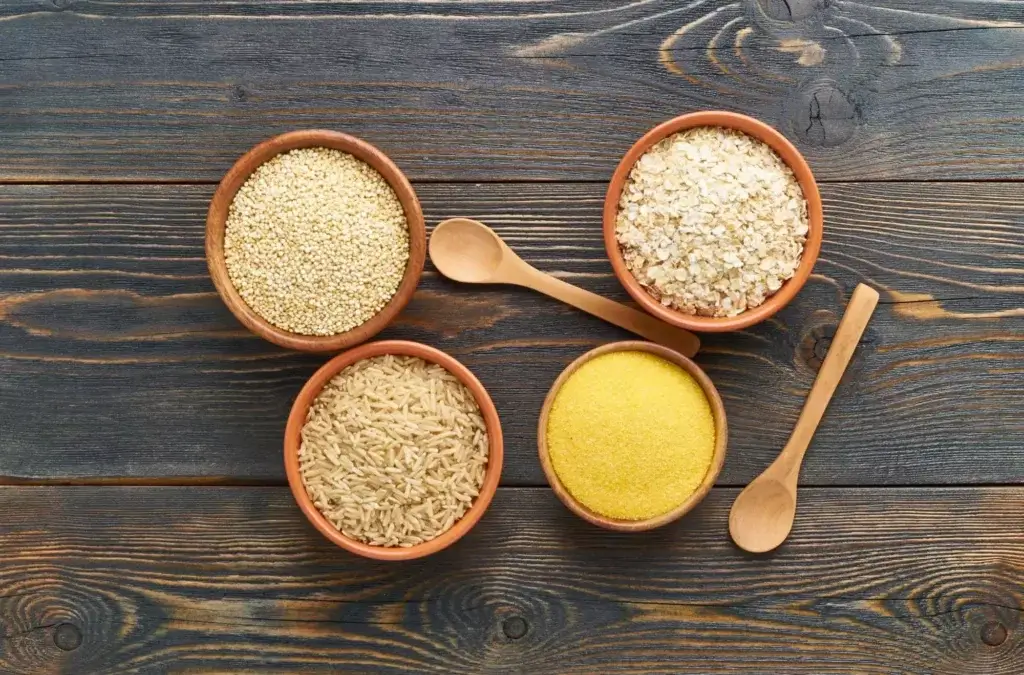Lectins are not your typical household name. However, they are present in a wide array of foods, from beans and grains to vegetables and fruits. They have a mysterious reputation. Are they dietary villains or misunderstood heroes? They have left many with burning questions. What exactly are lectins? Are they harmful or beneficial? How do they affect our bodies, and what can we do to make informed choices about our diets?
In this comprehensive blog series, we embark on a journey to demystify lectins. We’ll explore their roles in our bodies and examine their potential health implications. Furthermore, provide practical insights on approaching lectin-rich foods in your diet.
Whether you’re seeking clarity about the lectin controversy or looking for evidence-based guidance on making dietary choices, our mission is to equip you with the knowledge you need to make informed decisions about your health and nutrition.

What are Lectins?
Lectins are a diverse group of proteins or glycoproteins (carbohydrate binding proteins). These glycoproteins are common in most foods, particularly plants. They play a role in various biological functions in plants, animals, and humans. They have the ability to bind to specific sugar molecules. This binding can have various effects on cells and tissues.
In plants, lectins play a role in defending against pathogens and predators. They bind to sugars on the surface of microorganisms. This can potentially disrupt their cell membranes, making it more difficult for pathogens to invade the plant.
In animals, including humans, lectins are primarily encountered through the diet. A diet of plant-based foods contains them. When ingested, they can interact with carbohydrates on the surface of cells in the digestive tract and elsewhere in the body.
Benefits of Dietary Lectins.
Immune System Stimulation
Lectins, particularly those in plant-based foods, can stimulate the immune system. This can be beneficial in building a stronger immune response. A stronger immune response could potentially help the body fight infections and diseases.
Prebiotic Effects
Some types of dietary lectins may act as prebiotic fiber. Prebiotics are non-digestible substances that promote the growth and activity of beneficial bacteria. Prebiotics help good bacteria thrive and support a healthy gut microbiome. A healthy gut microbiome leads to improved digestion, gut health, enhanced nutrient absorption, and better overall health.
Antioxidant Properties
Certain lectins, found in colorful fruits and vegetables, may have antioxidant properties. Antioxidants help neutralize harmful free radicals in the body. Harmful free radicals can reduce the risk of chronic diseases and support overall health.
Blood Sugar Regulation
Lectins found in some legumes and whole grains may help regulate blood sugar levels. They can slow down the digestion of carbohydrates. Thus leading to a more gradual release of glucose into the bloodstream. This may be beneficial for individuals with diabetes or those at risk of developing the condition.
Cardiovascular Health
Lectins found in foods like whole grains and legumes may have a positive impact on heart health. They help to lower cholesterol levels and reduce the risk of heart disease.
Weight Management
The fiber content in foods containing lectins, such as beans and lentils, can promote feelings of fullness and satiety. This may aid in weight management or weight loss by reducing overall calorie intake.
Cancer Prevention
Some studies have suggested that lectins from certain foods may have anti-cancer properties. They interfere with the growth and spread of cancer cells. However, this is an area of ongoing research and is not yet fully understood.
Anti-Inflammatory Effects
In some cases, lectins may have anti-inflammatory properties. Chronic inflammation has a connection to various diseases. Therefore, reducing inflammation in the body can have positive health effects. Rheumatoid arthritis is inflammation in the joints. Some types of lectins have the potential to modulate the inflammatory response in the body. However, the impact of dietary lectins on arthritis-related inflammation is not well-established.
It’s important to emphasize that while dietary lectins offer potential benefits, they should be a part of a balanced and varied diet. Additionally, individual tolerance to lectins can vary. Some people may be more sensitive to certain types of lectins than others. Cooking and processing methods like soaking, fermenting, pressure cooking, and boiling can also reduce the lectin content. This can change the nutritional value of foods and make them more digestible.

As with any dietary component, moderation and variety are key. If you have specific dietary concerns, it’s advisable to consult with a healthcare professional or registered dietitian. They can provide personalized guidance based on your unique needs and preferences.
Negative Effects of Lectins
Lectins are a naturally occurring component of many foods. They serve various functions in plants and animals. Lectin consumption from foods high in lectins can potentially have adverse health effects on human health under certain circumstances or when consumed in excessive amounts. It’s important to note that lectin sensitivity and tolerance can vary among individuals.
Here are some possible negative effects of lectins
Gastrointestinal Distress
Lectins can bind to the lining of the digestive tract. This could potentially lead to digestive issues such as nausea, diarrhea, and abdominal discomfort. Some people may be more sensitive to these effects than others.
Impaired Nutrient Absorption
Lectins can interfere with the absorption of nutrients. Particularly minerals like calcium, iron, and zinc. When lectins interfere with digestive enzymes, it can reduce the efficiency of nutrient absorption. This can potentially lead to malabsorption of nutrients. Malabsorption of vitamins and minerals may contribute to nutrient deficiencies over time.
Increased Intestinal Permeability (Leaky Gut Syndrome)
As mentioned earlier, certain lectins may disrupt the tight junctions between intestinal cells lining the intestinal wall. Therefore, increasing intestinal permeability. This can lead to the passage of undigested food particles and toxins into the bloodstream. This can trigger an immune response and inflammation.
Autoimmune Reactions
The “lectin-free” diet theory suggests that lectins may trigger or exacerbate autoimmune diseases. Autoimmune disorders occur when the immune system mistakenly attacks the body’s own tissues. The mistaken attack leads to inflammation and tissue damage. They can cause a trigger by mimicking certain proteins found in the body. However, there is a limited amount of scientific evidence supporting this claim.
Allergic Reactions
True allergies to lectins are rare. However, some individuals may experience allergic reactions to specific lectin-containing foods. Symptoms can range from mild to severe. These symptoms may include hives, itching, swelling, or anaphylaxis.
Antinutrient Effects
Lectins are often antinutrients because they can reduce the digestibility of certain foods. For example, lectins in raw beans can cause “bean poisoning” or “lectin poisoning.” Poisoning can lead to symptoms like vomiting and diarrhea.
Impact on Gut Microbiome
The interaction between lectins and gut bacteria is complex. Some lectins may have prebiotic effects and promote the growth of beneficial gut bacteria. While others may disrupt the balance of the microbiome. The disruption can potentially contribute to digestive issues.
Potential Role in Chronic Diseases
Lectins may play a role in promoting chronic diseases, such as obesity, diabetes, and autoimmune conditions. However, there is a need for more research to establish clear causation and mechanisms.

Lectin Rich Foods
Many foods, including plant foods, contain lectins. While lectins are present in a wide variety of foods, the levels and types of lectin activity can vary significantly.
Here are some common lectin-rich foods:
Legumes
Kidney beans (mostly red kidney beans)
Soybeans
Peanuts
Dried beans
Grains
Wheat (especially whole wheat)
Barley
Rye
Quinoa
Oats
Rice (especially brown rice)
Nightshade Vegetables
Tomatoes
Potatoes
Eggplants
Peppers (bell peppers, chili peppers)
Seeds
Chia seeds
Sesame seeds
Sunflower seeds
Pumpkin seeds (pepitas)
Some Fruits
Bananas
Berries
Apples
Grapes
Cherries
Nuts
Cashews
Almonds
Pistachios
Seafood
Some seafood, such as shellfish, may contain lectins. However, seafood is not typically considered a significant source of dietary lectins.

It’s important to note that the lectin content in these foods can vary depending on factors. These factors can be plant variety, growing conditions, and food preparation methods. Cooking, soaking, fermenting, and processing can reduce lectin levels in foods. Reducing levels can make them more digestible and less likely to cause adverse effects.
Lectins To Avoid
Phytohaemagglutinin (PHA)
Found at high levels in raw and undercooked kidney beans, PHA is toxic to humans. Proper cooking (boiling) is necessary to destroy PHA and make kidney beans safe to eat. Therefore consuming raw kidney beans is NOT advised.
Wheat Germ Agglutinin (WGA)
Found in wheat and other grains, especially in the germ and bran, WGA is often cited as a lectin of concern. People with celiac disease or non-celiac gluten sensitivity may be particularly sensitive to WGA. It can potentially exacerbate their symptoms and they should avoid lectins that contain WGA.
Lectins in Nightshade Vegetables
Some individuals with certain autoimmune conditions or sensitivities may choose to limit or avoid nightshade vegetables, such as tomatoes, potatoes, and eggplants, due to concerns about lectins in these foods.
Lectins in Raw Legumes
Raw legumes, including raw lentils, raw peas, and raw kidney beans, are high-lectin foods. Avoiding these foods is advisable because of the risk of food poisoning and digestive discomfort. Proper cooking is necessary to make legumes safe to eat.
Lectins in Certain Nuts and Seeds
While many nuts and seeds contain lectins. The levels are generally lower compared to legumes and grains. Roasting or cooking nuts and seeds can help reduce lectin content.
It’s important to emphasize that most dietary lectins are in foods that also provide valuable nutrients, fiber, and other health benefits. Completely eliminating these foods from your diet can lead to nutrient deficiencies and a less diverse diet.
Legumes with Low Lectin Levels
Green beans
Canned Beans
Lentils (red and yellow)
Chickpeas
Key Takeaways
In conclusion, lectins are naturally occurring proteins found in many foods. Their roles range from plant defense mechanisms to potential health effects in humans. While lectins have generated considerable attention and debate in recent years, it’s important to approach the topic with a balanced perspective.
Lectins are present in a wide variety of foods, including legumes, grains, vegetables, fruits, and dairy products. Some individuals choose to limit or avoid lectin-containing foods. This is due to concerns about potential negative effects on digestion, autoimmune conditions, or other health issues.
However, it’s crucial to emphasize that the relationship between dietary lectins and health is complex and not fully understood. Scientific research on lectins is ongoing and there is a need for more evidence. Research will establish clear cause-and-effect relationships and mechanisms.
For most people, consuming lectin-rich foods as part of a balanced diet is not associated with significant health risks and can provide important nutrients and health benefits. Traditional cooking and preparation methods, such as cooking, soaking, fermenting, and sprouting, can reduce lectin levels in foods and make them more digestible.
If you have specific concerns about lectins in your diet or are experiencing digestive issues, it’s advisable to consult with a healthcare professional or registered dietitian. They can assist with personalized guidance and recommendations tailored to your specific needs and health status.
In the ever-evolving landscape of nutrition and health, it’s essential to stay informed, ask questions, and make dietary choices based on your individual circumstances and preferences. Ultimately, achieving a balanced and varied diet that suits your nutritional needs and supports your well-being is the key to maintaining a healthy lifestyle.




